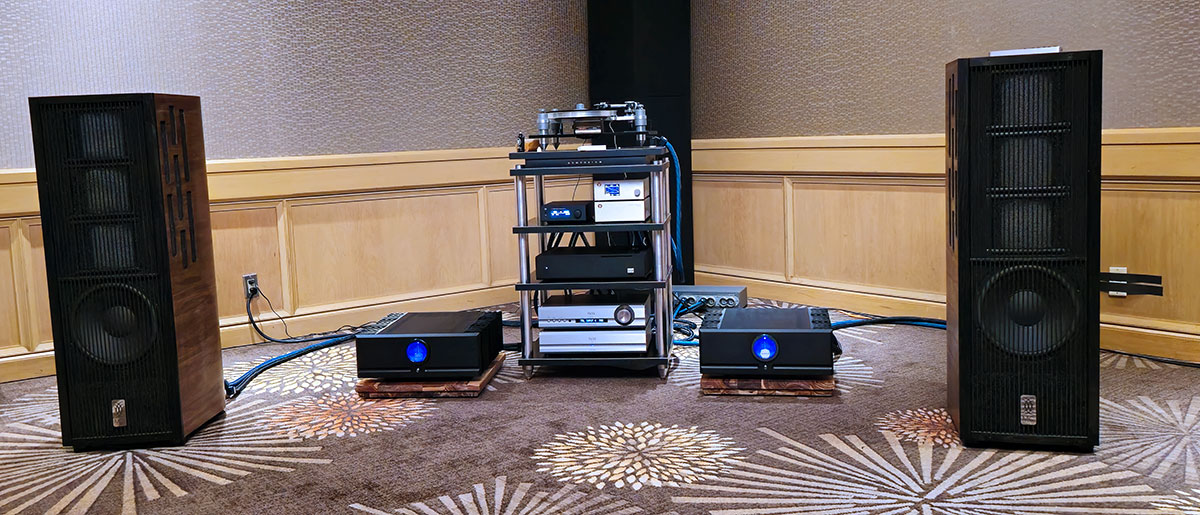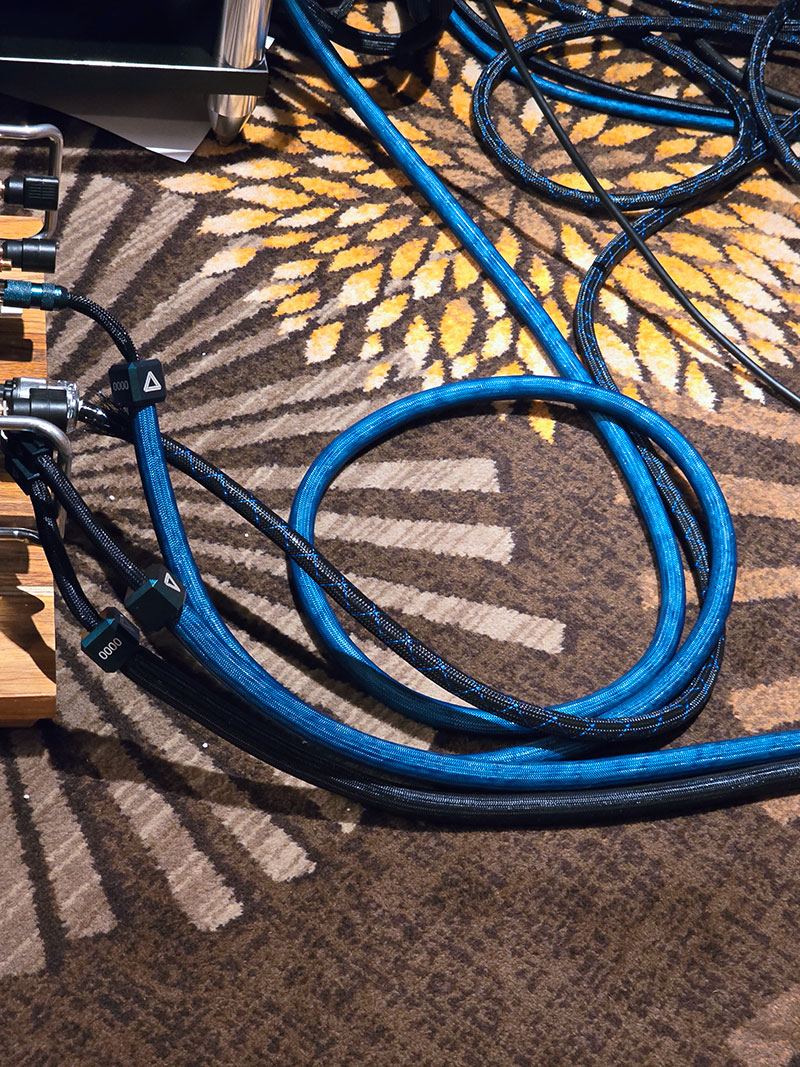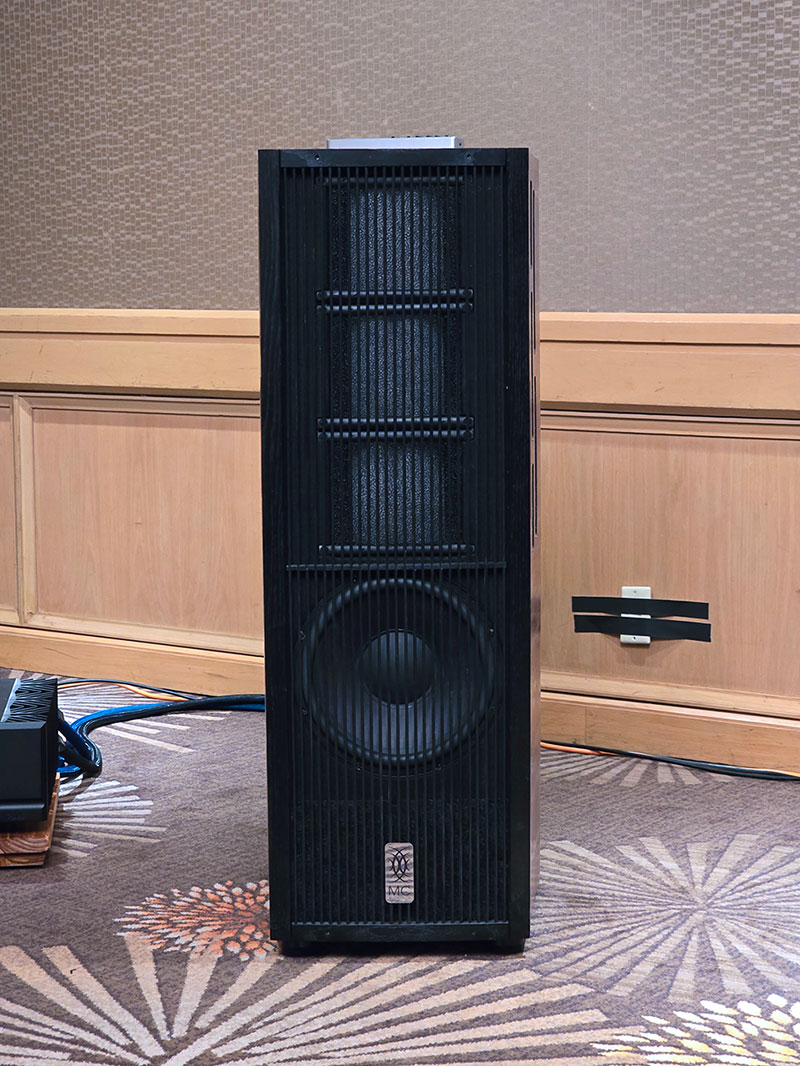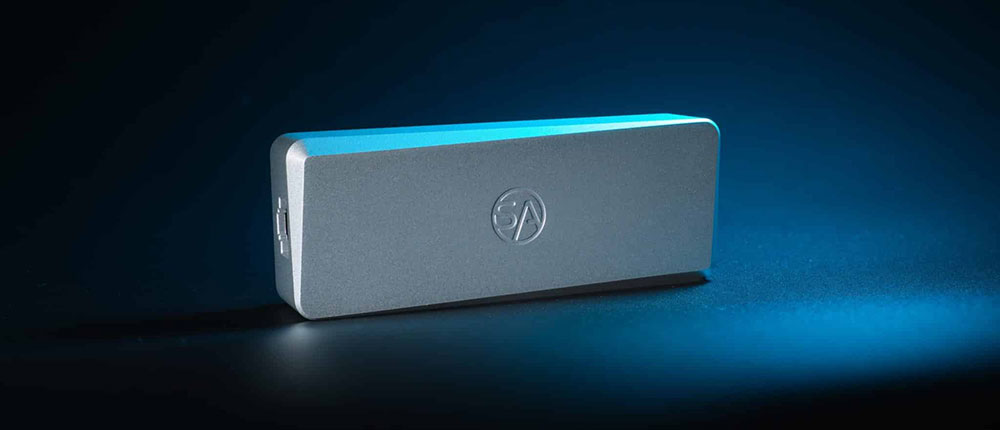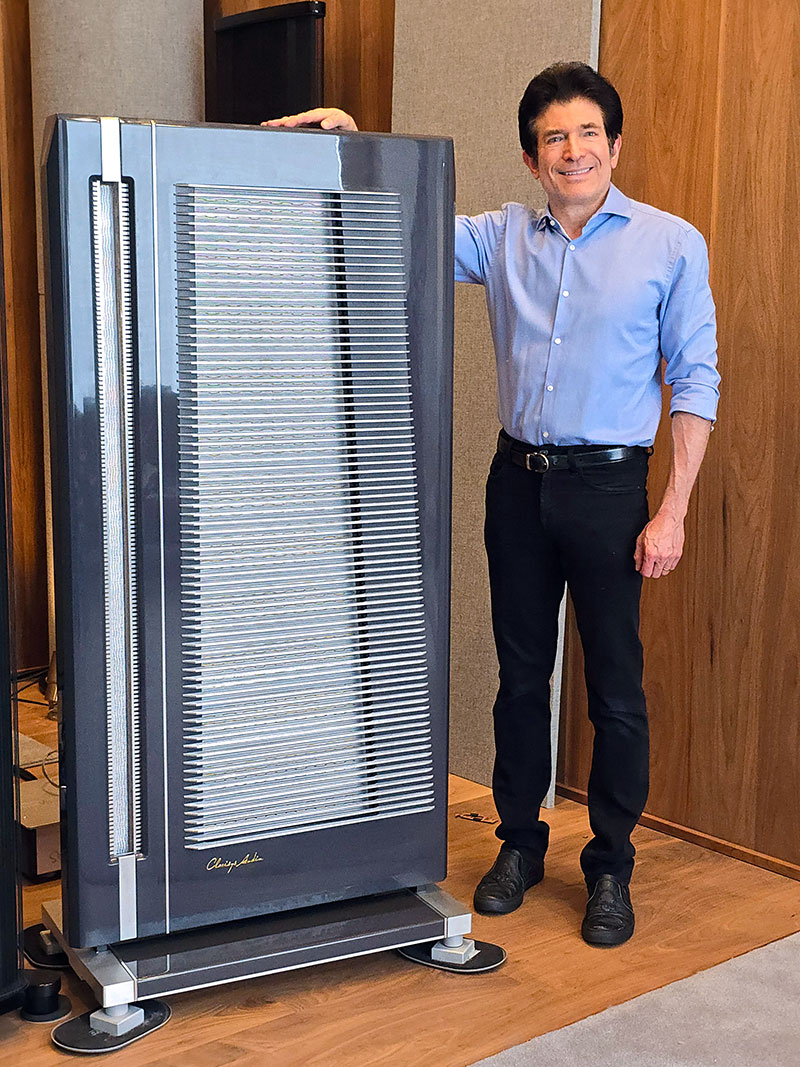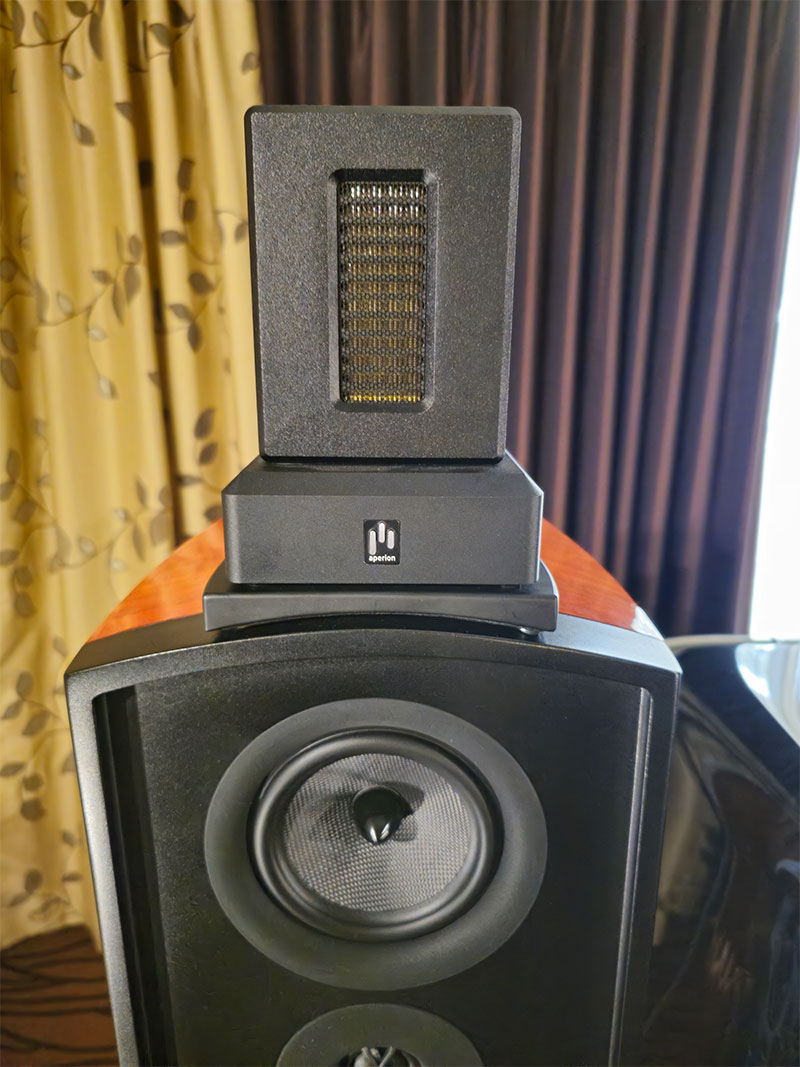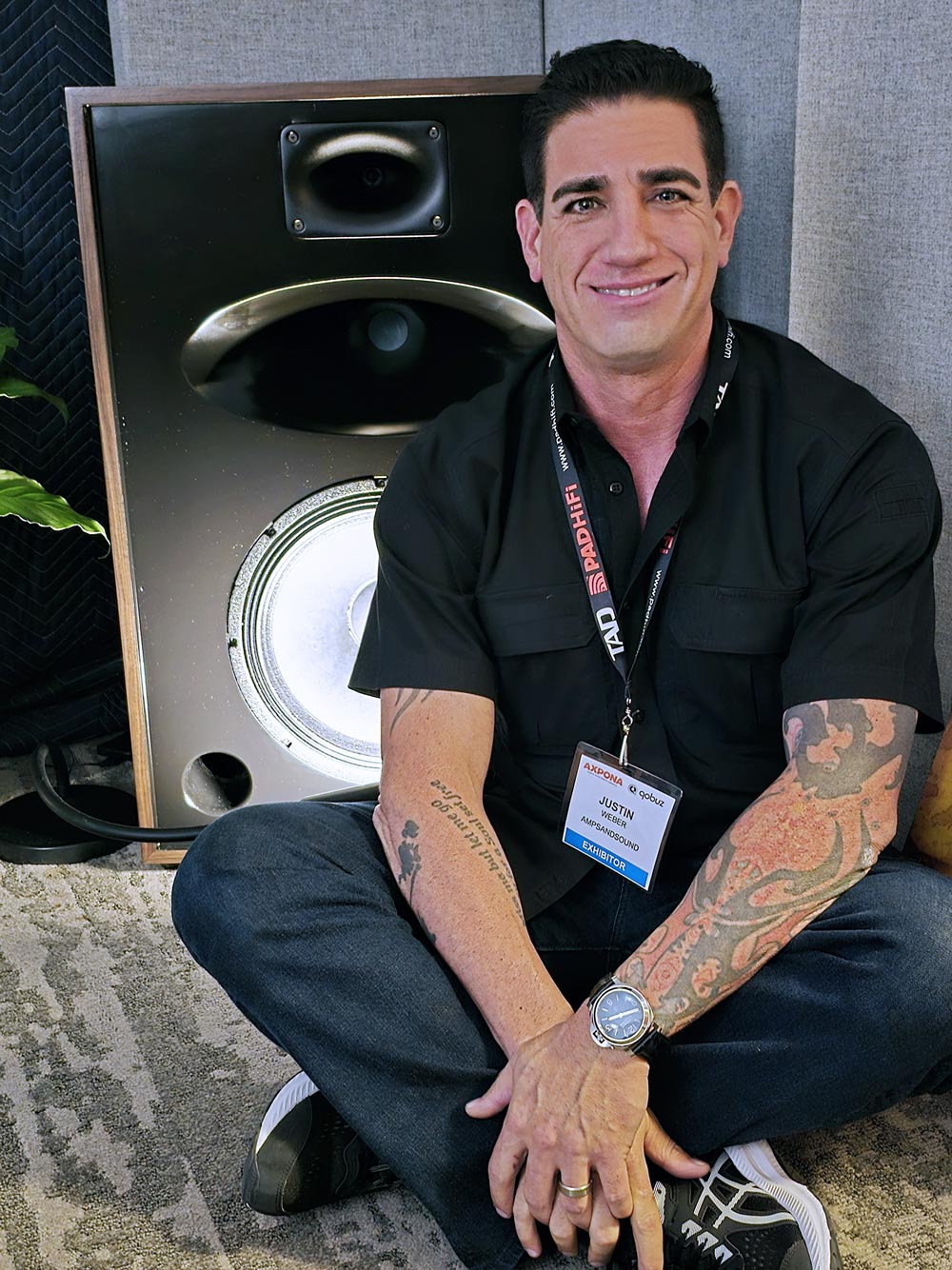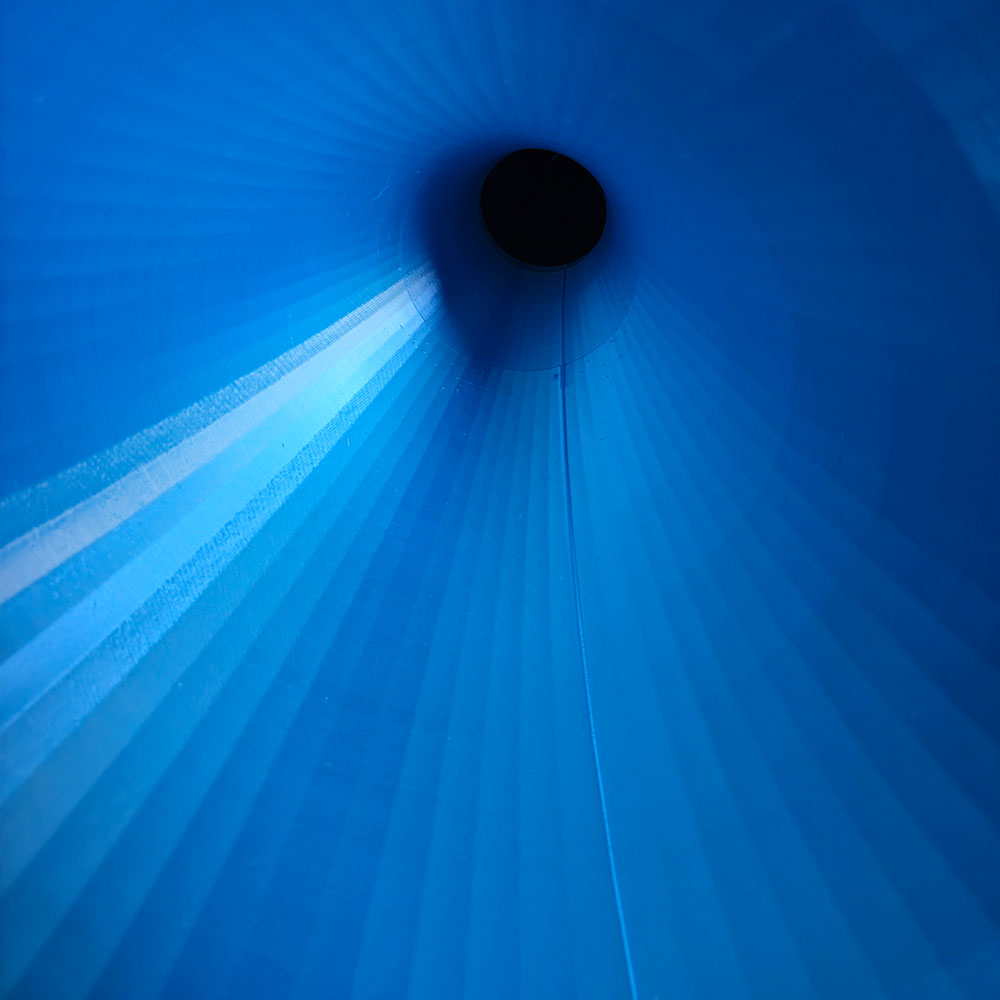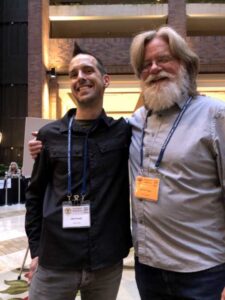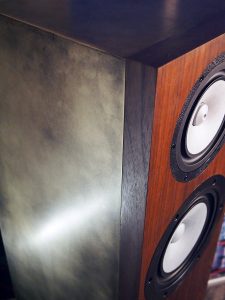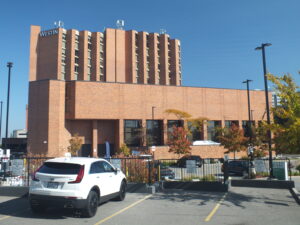I found Mark Conti of MC Audiotech and Robert Sears of Shimmer Audiophile setting up their gear in a large conference room at T.H.E. Show on a Thursday night in preparation for a long weekend of demos. Though they were working the kinks out of the system, the sound was already gelling, and I was looking forward to what these guys wrought by the time they opened the doors Friday morning. I came back and spent considerable time with this system during the show, playing some of my vinyl super discs, and other great music.
Tracking the unique and patented driver technology used in Mark's speakers since their inception in the early 1980s, my anticipation was high. Originally Mark licensed this technology to Linaeum Corporation and later to the company, Impact, for their Airfoil loudspeaker. Often called a Bending Wave driver, most people used the terms for the previous speaker products. Radio Shack licensed the Linaeum driver and created an inexpensive Optimus loudspeaker in the late 80s. Audiophiles in the know snapped these up, dismantling them to harvest the drivers for their own DIY speaker projects. I was one of those geeks!
It was delightful to hear a couple of years ago that Mark Conti had created MC Audiotech as a way to further develop this driver and bring his lifelong vision to market. I heard the prototypes of the TL-12 speaker at T.H.E. Show last year and it was very promising. This year the product is finished, and Mark partnered with Robert Sears of Shimmer Audiophile to put together a solid showing. You can find the technical details of the current iteration of the WBLS transducer in his white paper HERE. The TL-12's drivers operate as a full-range dipole down to 300Hz, where they transition to the 12 inch bass driver with a first-order crossover. (The smaller TL-8 model crosses over to a 8 inch bass driver at 500Hz.) A wideband driver capable of covering 20kHz to 300Hz is indeed impressive, especially considering its relative efficiency, minimal effective mass, and broad dispersion.
A Shimmer Cable Loom
Robert Sears is launching a new company and cable line this weekend. Shimmer Audiophile has a full lineup of cables based on his proprietary silver technologies. Robert is a quintessential passionate inventor, with a clear vision for improving cables. His fresh perspective is a welcome addition to the audio world. Robert's emphasis on cabling is to use the highest quality and densest silver he can source. His bespoke metallurgist draws 99.99% pure silver that is higher density than most used in audio, and consequently weighs more and costs more. He claims that there are less inclusions and air pockets in the drawn wire which leads to significantly purer sound. He also avoids using any shrink wrap as he has found that this leads to significant issues with performance and break-in. In fact, Robert claims that his designs need only 10 minutes of break-in to sound their best! There are other significant aspects of build and preconditioning that make his designs unique. Robert's philosophy on cable tone and voicing is that "cables do not have a sound, if they do, that is a defect." Robert voices his cables to contribute no additional sound to a system. The cables are beautifully built and finished, and it's obvious that great care has been put into their manufacture. Their pricing is on the highest tier, and Robert is confident that their performance is as well. Robert will offer in home demos of his cables to any interested parties. The system did sound amazing, and I'm sure Robert's cables contributed positively to the sonics.
The speakers were powered by a Pass Labs XP-22 preamp and XA60.8 monoblock amps. Digital was handled by a Wolf Audio Systems Alpha 3 Music Server, and a Weiss DAC 501 Processor. There was also an analog front end, but I didn't catch what was being used. It sounded excellent though, superior to the digital front end.
The TL-12 Speaker
So what was the result of the melding of all this technology? An incredibly natural and transparent window into the music is what I experienced. The WBLS transducer was able to present the treble in a way without peaks or spotlighting, without sounding either recessed or forward, but fully extended and clean. Traditional speakers with tweeters and a crossover in the treble range may sound smooth to the ear, but they do have minor shifts in phase and frequency that causes treble from instruments to be highlighted in certain ways. Single driver cone speakers use various physical design aspects to reinforce and extend the treble. These also create peaks and valleys in frequency and time domains. Electrostatic panels may play in the same wide band frequency range, but I have rarely experienced anything similar with them. The only similar sound I've heard is from Manger transducers, but they presented music with a smaller scale and restricted dynamics. Listening for the treble and midrange through the TL-12, it makes clearer how the negative distortions in other designs color the music. The speed and effortlessness of the drivers are so strong that my experience was a bit of a contradiction. Music had a laid-back and mellow perspective until crescendos and dynamics launched from nothing, virtually whipping my head back.
All these mad skills are from 300Hz up. But a full range speaker needs to integrate the bass as well. The 12" bass driver did keep up with the WBLS transducers admirably, albeit with a slightly warmer tone and marginally less snap. Anybody that has worked with electrostatic or planar designs knows that creating a perfect match between dissimilar transducer technologies remains elusive, but I also believe that careful and knowledgeable matching of electronics, sources, and ancillaries could render this point completely moot.
To that end, some of this could be the choice of the Pass Labs XP-22 preamp and XA60.8 amps, which in my experience, veer from neutral by being a bit warm and thick in the bass (qualities that win them fans in other systems). If someone grooves on these speakers as hard as I do, it would be a rewarding endeavor to curate a system with components that synergize perfectly with them.
Synergy is the name of the game, and finding music that brings out the best of a system is always special. Saturday, we found one such album, a super disc from my collection I ran across as I was pulling records to bring to the show. I forgot I had it, as my collection has been very disorganized since I rearranged my listening space. It is one of the finest direct to disc recordings I have ever heard, and surely rates to be in the top 100 best sounding recordings of all time. The LA4's Pavane Pour Une Infante Défunte is a tour de force of recording technology. Thankfully it is also in the hands of masters, the LA4 consisted of Laurindo Almeida, Bud Shank, Ray Brown, and Shelley Manne—A jazz supergroup if there ever was one. When spun on this system it highlighted the transparency and speed of the system, capturing very soft playing with sudden dynamic wallops of drums, and horns, and flutes. In some systems this flute can be a bit too forward and piercing. In this system it rendered it free of restraint and limits with real solidity and force. In fact, all instruments hung in space with a combination of precision, disarming naturalness, and effortless dynamics, giving me a glimpse of what a truly great system is capable of.
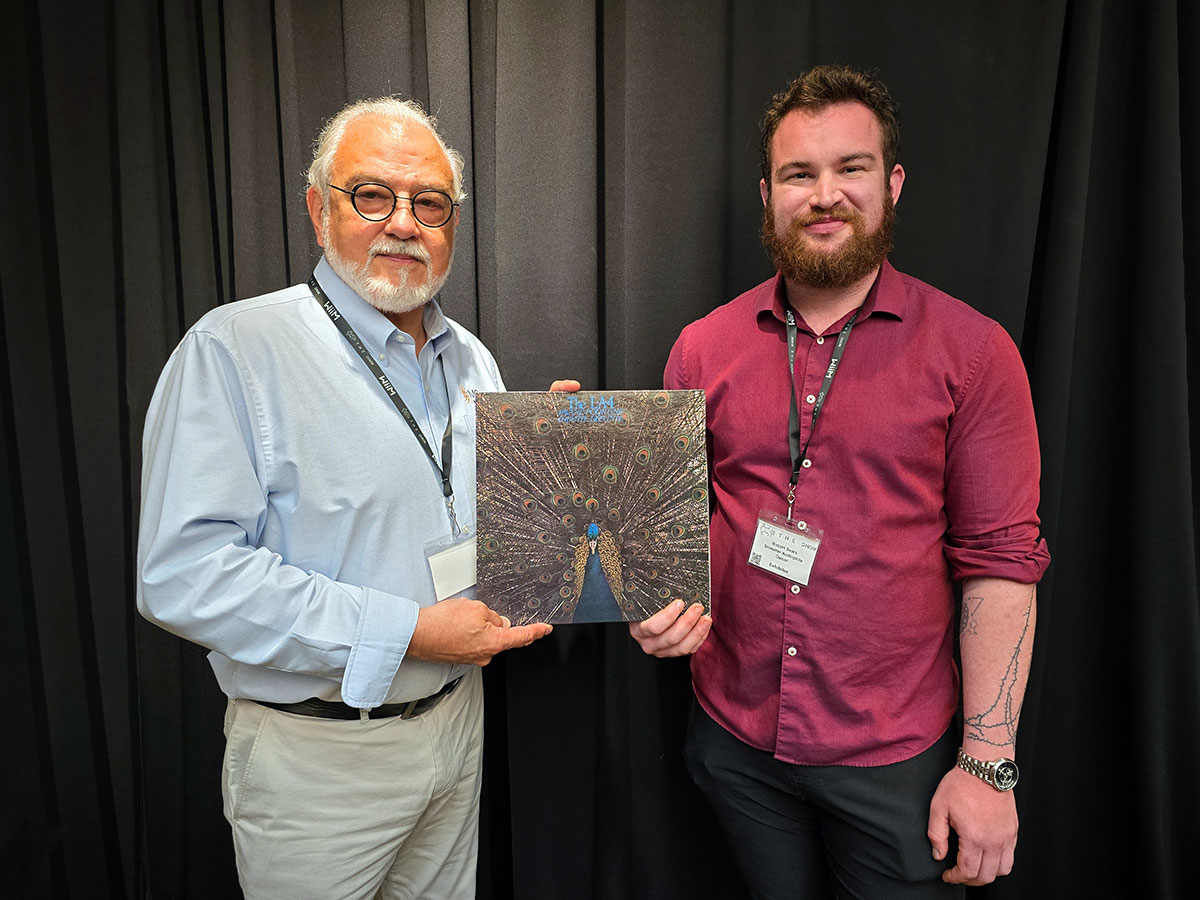
Mark Conti & Robert Sears prepare to arm wrestle each other for The LA4's Pavane Pour Une Infante Défunte
Shimmer Audiophile Bespoke Cables




